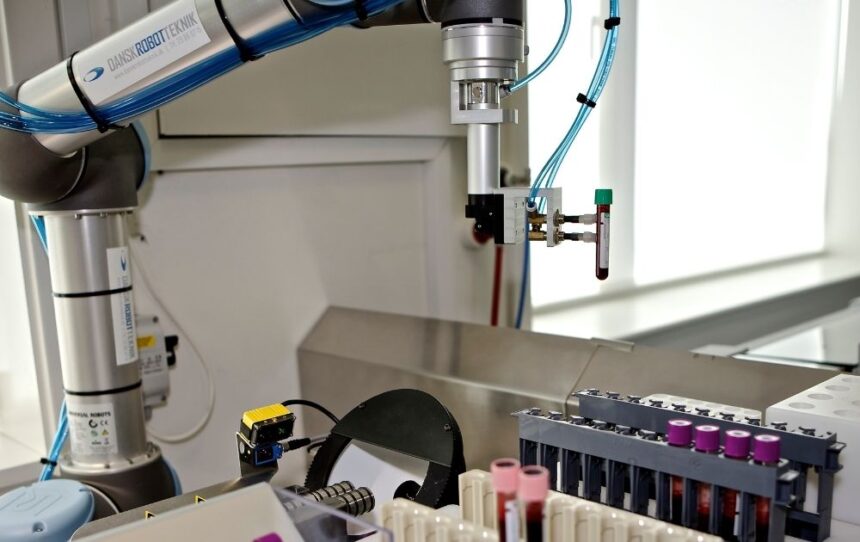Introduction to Medical Robotics: The integration of robotics within the field of medicine and surgery has emerged as a pivotal advancement in recent years. What exactly does this discipline entail? How are robots applied within the medical context, and what are their benefits and challenges?
In essence, medical robotics refers to the utilization of robots to perform various tasks typically carried out by humans. Within the healthcare sector, these robots play crucial roles, ranging from assisting in surgeries to supporting medical care and patient rehabilitation.
Key Applications of Robotics in Medicine:
- Advanced Surgery: One of the most significant applications lies in surgical procedures. Systems like the previously mentioned Da Vinci system have revolutionized surgical practices by enabling less invasive procedures, shorter durations, and faster patient recovery times.
- Innovative Rehabilitation: Robots also play a fundamental role in the rehabilitation of individuals with physical disabilities. Through the use of robotic technologies, controlled repetition of movements is facilitated, contributing to functional recovery in patients.
- Efficient Medication Management: However, the most common use of medical robotics is related to medication storage and distribution. In certain aspects, current robots are more effective than humans in dispensing and dosing medications.
- Healthcare Assistance: Additionally, the use of robots in the healthcare setting is becoming increasingly common. For example, they are used to provide services in contaminated areas or areas with a high concentration of viruses or bacteria. Furthermore, they can provide companionship and serve as a source of distraction for patients of all ages.
- Prosthetics and Robotic Exoskeletons: While there are currently prosthetics that can replace lost limbs, medical robotics aims to go further by implementing so-called robotic exoskeletons. These devices can replicate the natural movements of a limb by capturing the neural signals generated by the brain.
- Sensory Recovery: Thanks to advancements in robotics in the healthcare field, it has become possible for individuals who have lost a sense to regain it. Examples include a woman who regained her hearing for the first time after a cochlear transplant, or a man who regained his sight through the implantation of a bionic eye.
- Vaccine Research: Medical robots are also combined with artificial intelligence to collaborate in the research of vaccines and innovative treatments. This technological fusion allows for the processing of large amounts of data and conducting laboratory tests with maximum precision.
Advantages of Using Robots in the Healthcare Sector:
The use of robotics in medicine offers numerous advantages and simplifies the work of healthcare professionals. Among them, the following stand out:
- Improved Precision: Medical robots, when properly configured and supervised by a physician, can achieve more precise and efficient execution of tasks carried out by professionals.
- Rigorous Diagnostics: One of the most important applications of AI involves diagnostics. With the help of artificial intelligence, robots can search for patterns in medical records and detect diseases such as cancer with greater accuracy.
- Skill Enhancement: Smart prosthetics equipped with sensors enhance the ability of certain parts of the body. It is even possible to cover them with artificial skin and facilitate a connection with human muscles.
- Robotic Assistance: Lastly, as mentioned, robots are also crucial agents when it comes to performing tasks such as disinfection and organization of medical environments.
Challenges and Future of Medical Robotics:
However, despite its numerous advantages, medical robotics will also face challenges in the future that may restrict its availability and application.
Among the main challenges, we can mention the lack of tactile feedback and some socioeconomic factors, such as the high cost of implementation and the shortage of qualified personnel to use it.
Conclusion: In conclusion, the integration of robotics into medicine has ushered in a new era of possibilities, offering innovative solutions to complex healthcare challenges. While the field continues to evolve, addressing existing challenges will be crucial in maximizing the potential benefits of medical robotics for patient care and treatment outcomes.













